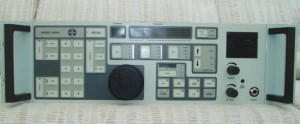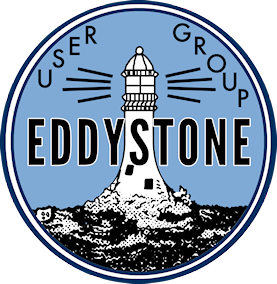Eddystone 1650/6 sells for £314 on E bay
 Seeing the offer and eventual sale of an Eddystone 1650/6 receiver brought back memories of the original sale and their subsequent disposal by the customer onto the Government surplus market. The 1650 set was the company’s first microprocessor controlled general coverage communication receiver. Introduced in 1984 and went on to have many variants, all looking the same. It had a sealed membrane front panel and covered 10kHz to 30MHz in 5Hz steps. It also had a 99-channel memory, any number of which were scannable and with any portion of the frequency spectrum sweepable. Tuning was either by keyboard or knob and it had a built-in motor-tuned pre-selector option. It was a double conversion super-het with a first of IF 46.205MHz, and second IF of 1.4MHz. Could operate from AC mains or 24V DC and was remotely controllable Prices c.£3.5k in 1984.
Seeing the offer and eventual sale of an Eddystone 1650/6 receiver brought back memories of the original sale and their subsequent disposal by the customer onto the Government surplus market. The 1650 set was the company’s first microprocessor controlled general coverage communication receiver. Introduced in 1984 and went on to have many variants, all looking the same. It had a sealed membrane front panel and covered 10kHz to 30MHz in 5Hz steps. It also had a 99-channel memory, any number of which were scannable and with any portion of the frequency spectrum sweepable. Tuning was either by keyboard or knob and it had a built-in motor-tuned pre-selector option. It was a double conversion super-het with a first of IF 46.205MHz, and second IF of 1.4MHz. Could operate from AC mains or 24V DC and was remotely controllable Prices c.£3.5k in 1984.
In 1988 to Government asked us to quote for a special version which would be controlled by computer. I personally didn’t see the specification as it was restricted but it clearly did not require a tuning knob or front panel controls. This set was designated the 1650/6. It was to be used for some sort of FSK operation and had two IF centred filters with a special 5kHz product detector.
In the late 1990’s these sets were apparently surplus to requirements and found their way onto the surplus market. EUG member Geoff Steadman M0BGS bought one effectively performance unknown and was disappointed to find how special it was. However on further examination he found lots of the original spin-tune circuits were in place and decided that he would set about converting it back into a tuneable general purpose HF receiver. He wrote up his experiences in EUG Newsletter No 72 pages 6-9. But it involved some display driver IC additions, replacing LED’s, drilling holes in the front panel, sourcing an knob and encoder, finding suitable filters and a lot of EPROM programming and eventually got it working on AM, LSB,USB and CW. This took him about 2 years to do. He produced some kits and modified a number of these sets for various EUG members. I guess it was one of these that found its way onto E bay. The set was sold as parts/not working due to occasionally requiring a mains on/off reset
